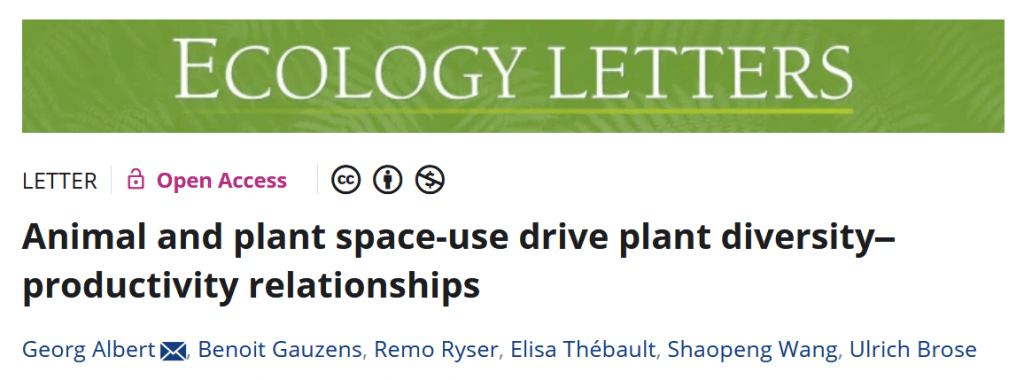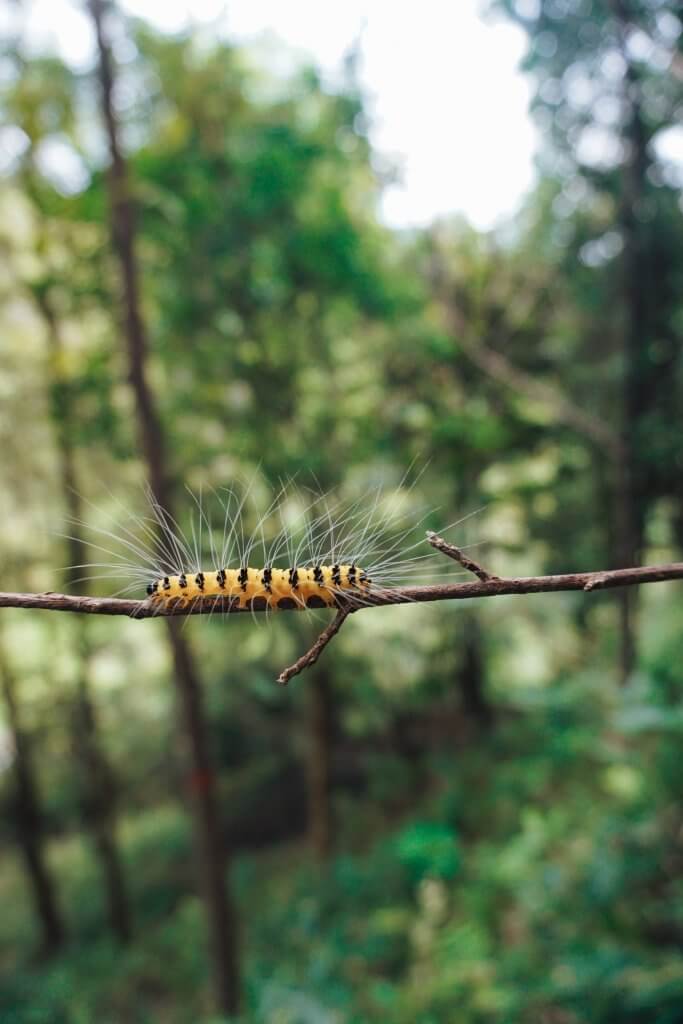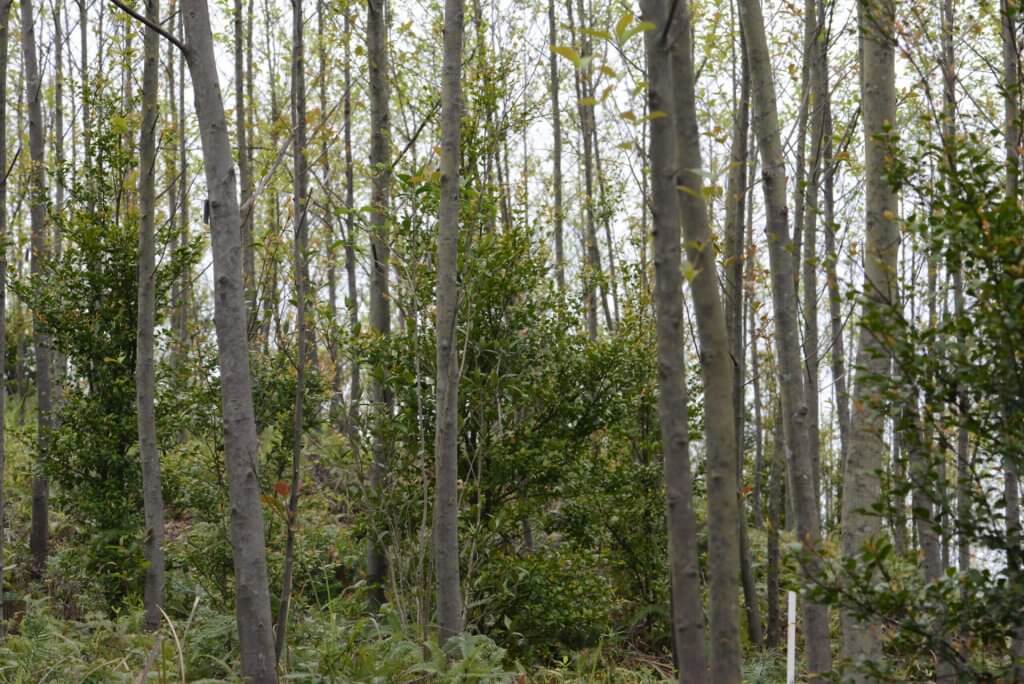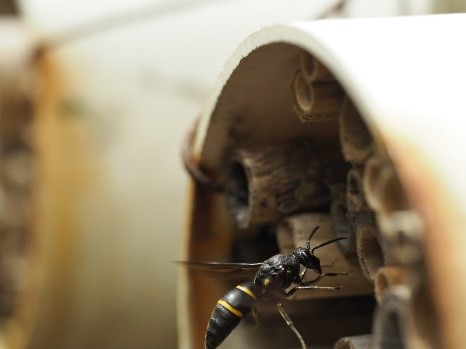
Summary: Plant community productivity generally increases with plant biodiversity. This positive relationship is rooted in the interactions between plant individuals. Such interactions are often attributed to resource competition but can be similarly mediated by animals. However, while resource-based plant interactions are spatially local, the spatial scale of animal-based interactions varies depending on the animals involved. To understand the consequences of this scaling differences for plant diversity-productivity relationships, we simulated plant communities under different space-use scenarios and along a diversity gradient. We show that plant and animal space-use can drastically alter competition within plant communities. Specifically, strong animal-based competition from herbivore space-use can lead to negative diversity-productivity relationships. However, space-use of larger top predators integrates sub-food webs composed of smaller species, offsetting potential negative effects of herbivore- and resource-based competition on plant communities.
Conclusion: Differences in animal space-use modify competitive interactions throughout food webs and introduce substantial variation in how plant communities respond to changes in plant biodiversity. Understanding how the spatial realization of feeding interactions differs between animal communities will help identifying drivers of biodiversity effects and can serve as a framework for linking local and landscape processes.



Summary: Extrafloral nectaries (EFNs) are nectar glands outside plant flowers. By providing a sip of notorious and sweet liquid, plants with EFNs attract ants and other natural enemies that may reduce herbivore loads. Such ‘food-for-protection’ mutualisms have been studied extensively for plants with EFNs. However, it was unknown whether this mutualistic association also benefits neighboring plants that do not produce extrafloral nectar. We now show that trees neighboring EFN trees have more ants and fewer herbivores compared to conspecific control trees without EFN-bearing neighbors. Concurrently with the changes in the arthropod community, the composition of leaf traits potentially related to plant defense shifted. These novel results suggest that when trees without EFNs benefit from lower herbivore loads as a result of predatory ants spilling over from EFN-bearing neighbors, resource allocation into defense could be lowered, which would free resources for growth.
Conclusion: Facilitation between plant species, an important mechanism behind biodiversity-ecosystem functioning relations, can be driven by mutualistic predators that enhance conditions for plants without defense mutualisms. As plants with EFNs are common in tropical and subtropical floras, the revealed mechanisms may be widespread and functionally important. For example, adding EFN species to species pools in reforestation and restoration projects could foster herbivore control, growth and other ecosystem functions.


Summary: Plant diversity affects multi-trophic communities, but in young regrowth forests, where forest insects are in the process of re-establishment, other factors might be more important. We showed in the BEF-China experiment that tree diversity was not important, but tree biomass and canopy cover, mediated by changes in microclimatic conditions, were important for the bee, wasp and natural enemy community re-establishment.
Conclusion: Although maximizing tree diversity is an important goal of forest reforestation and conservation, rapid closure of canopies is an important driver for re-establishing communities of forest bees, wasps and their natural enemies.